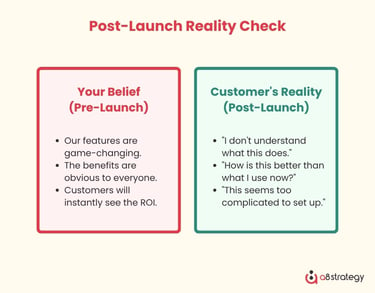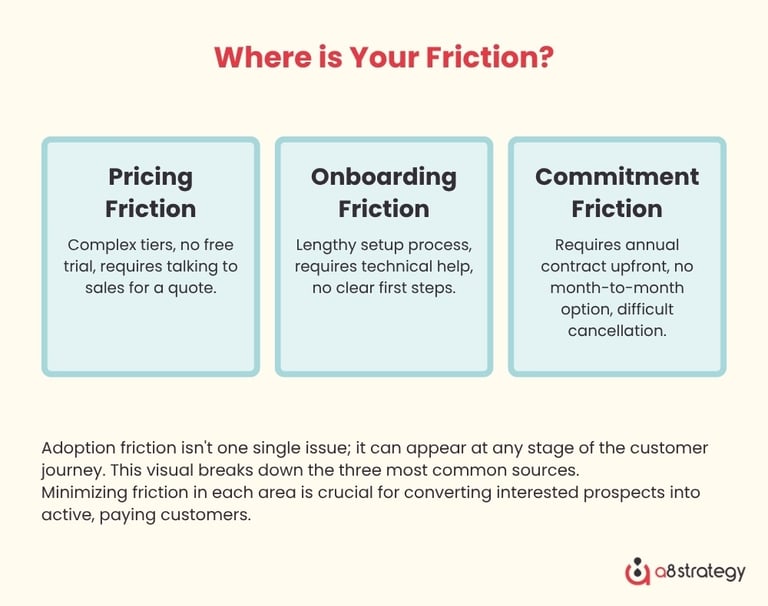Why Isn’t My Product Selling Even After a Big Launch?


Even with an excellent product, success is never guaranteed. An article from Harvard Business Review states that a staggering number of new products fail to meet their launch targets. Suppose you've recently completed a major launch and your sales dashboard shows no growth. In that case, you're encountering one of the most common challenges in business, where new product sales are not happening, which is a painful reality.
The good news is that the reasons why products fail after launch are often predictable and fixable. Instead of panicking, it's time for a calm, methodical analysis of the core product launch failure reasons to pinpoint the blind spot between your product and the market.
Reason 1: The Value Perception Gap
Internally, you and your team are convinced that the product is revolutionary, but your target customers don’t seem to agree. This is a value perception gap, one of the reasons why products fail after launch. The problem isn't necessarily the product itself, but the way its value is (or isn't) being communicated and demonstrated through compelling storytelling, a point emphasized by McKinsey.


Your launch messaging may be too focused on technical jargon or features, neglecting to address the customer's simple question: "What's in it for me?" Revisit your go-to-market strategy and critically assess if your messaging is truly customer-centric.
Reason 2: High Adoption Friction
Sometimes, a customer is interested in your product but finds it too difficult to start using it. This "adoption friction" is a silent killer of post-launch momentum and a key reason new product sales are not happening. Every extra step, every moment of confusion, and every required commitment in the buying process is a potential exit point for your customer.
According to CB Insights, a top reason startups fail is a "user-unfriendly product." This extends beyond the user interface to the entire customer journey. A critical part of your strategic plan for business expansion must be to map and minimize every point of friction from discovery to first value.
Reason 3: The "Launch and Leave" Mentality
A launch is not a finish line; it’s the starting point. One of the most common product launch failure reasons is the "launch and leave" mentality, where all the energy is focused on launch day, with little to no plan for sustained marketing, sales follow-up, and customer feedback analysis in the weeks and months that follow. This thinking overlooks a critical insight from innovation studies by NielsenIQ, which found that a strong product isn't enough on its own; true success requires a comprehensive go-to-market strategy tailored to the consumer, the retailer, and the specific market to maximize the innovation's potential.
Expert Insight: The Quest for Operational Excellence
How do you create marketing strategies that not only capture attention today but also build lasting brand equity for the future? In this episode from the Scale With Adel YouTube channel, seasoned marketing strategist Hussein Hammoud unpacks the science behind consumer behavior, revealing what truly drives brand loyalty. He explores the intersection of data, storytelling, and technology, discussing why authenticity and adaptability are key to sustaining brand relevance over time.


Momentum is not self-sustaining. It requires a continuous effort of marketing, content creation, sales outreach, and community engagement. Modern tools can help, but as a separate HBR article points out, technology like Gen AI is a tool to augment strategy, not replace it. Without a post-launch plan, your initial buzz will quickly fade, leaving you with stalled growth.
From Analysis to Action
The feeling that accompanies a failing product launch is tough, but it's also a critical moment for learning. The primary reason why products fail after launch is rarely a single catastrophic error. Instead, it's often a combination of a value message that doesn't connect, friction in the adoption process, and a lack of sustained post-launch effort.
Use this analytical framework to have honest conversations with your team. Talk to the customers who didn't buy. Analyze your onboarding process. Review your marketing calendar for the next six months. By systematically addressing these areas, you can turn a stalled launch into a valuable lesson and build a stronger foundation for sustainable growth. If you need help with this analysis, consider seeking expert risk management services.



